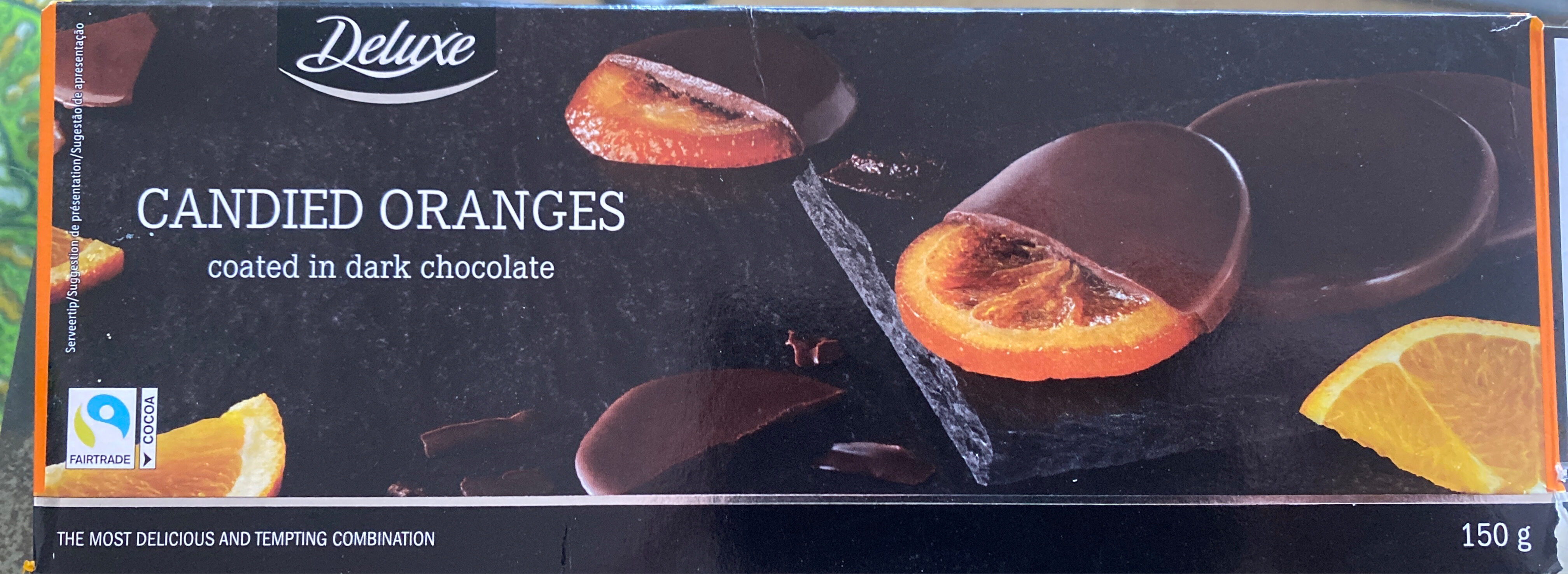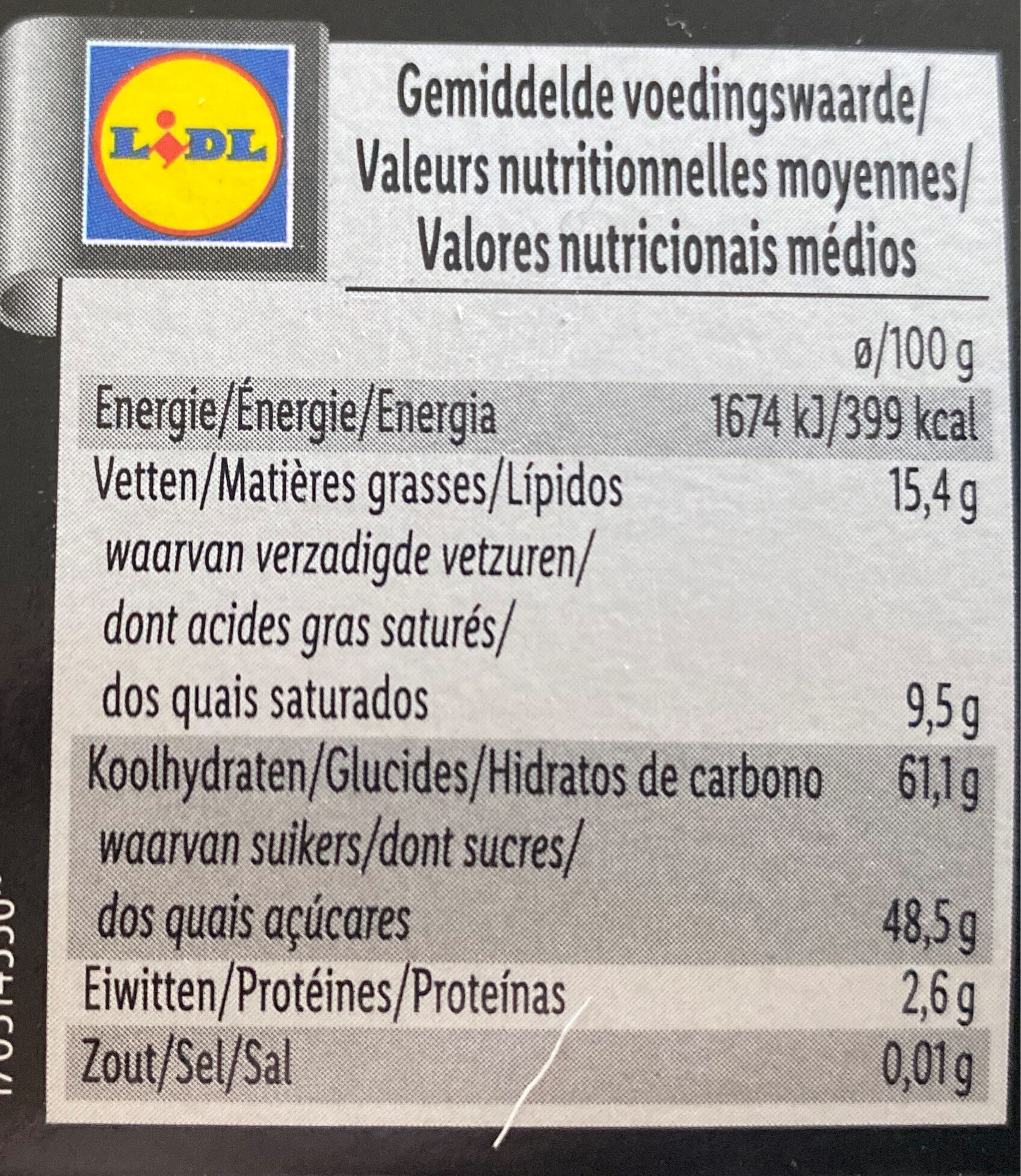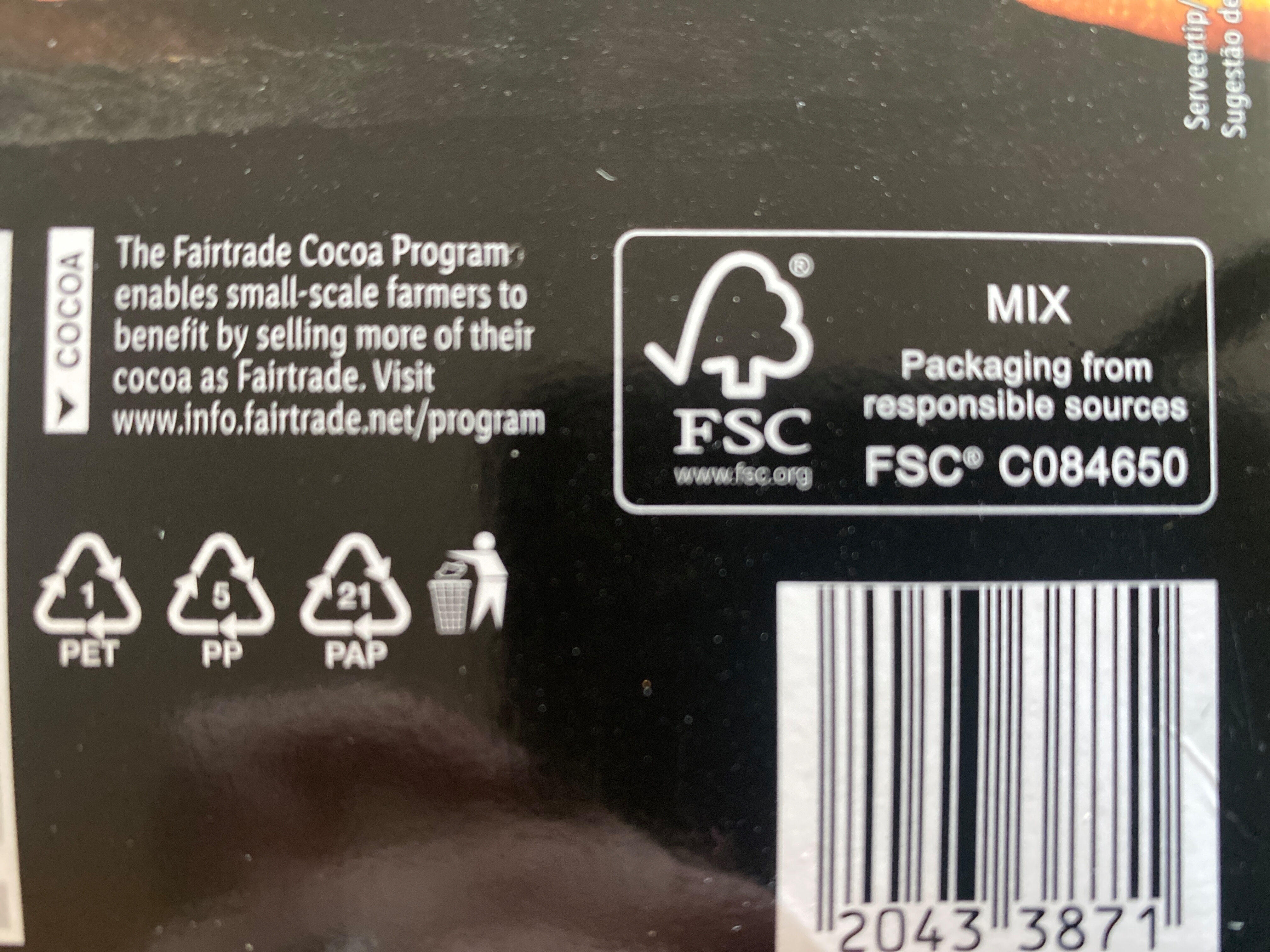Naranjas confitadas bañadas en chocolate negro - Deluxe - 150 g (6 x 25 g)
Codi de barres ambigu: aquest producte té un codi de barres amb número de circulació restringit per a productes d'una empresa. Això significa que diferents productors i botigues poden utilitzar el mateix codi de barres per a diferents productes.
×
Aquesta pàgina del producte no està completa. Podeu ajudar a completar-la editant-la i afegint-hi més dades a partir de les fotos ja disponibles, o fent-ne més amb l'aplicació de androide o iPhone / iPad. Gràcies!
×
Codi de barres: 20433871
Nom comú: Naranjas confitadas bañadas de chocolate negro (Cacao: 48% mínimo. en el chocolate)
Quantitat: 150 g (6 x 25 g)
Empaquetament: Plàstic, en:Box, en:container
Marques: Deluxe
Categories: Snacks, Aperitius dolços, Cacau i derivats, Llaminadures, Caramels de xocolata, Bombons, en:Fruit confectioneries, en:Chocolate covered fruits, fr:FSC, fr:Fairtrade
Etiquetes, certificacions, premis:
Lliure de gluten, Agricultura Sostenible, Punt verd, Certificat UTZ, Cacau certificat UTZ

Llocs de fabricació o processament: España
Codi de traçabilitat: FSC-C084650
Botigues: Lidl
Països on es va vendre: Espanya
Matching with your preferences
Report a problem
Fonts de dades
Producte afegit per javichu
Última modificació de la pàgina del producte per roboto-app.
La pàgina del producte, també editada per kiliweb, moon-rabbit, musarana, nanouchka, neptuno, packbot, thaialagata, yuka.UTUxUUtLTUNxZjlSbzlzSDBFLy8wL1F0MWI3MFJUeVFCN01PSVE9PQ, yuka.sY2b0xO6T85zoF3NwEKvln1MQ9jkiWz1Zi36yGez-uzfD8y4XN1iy9TjKqs.














